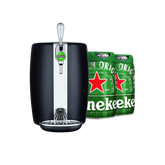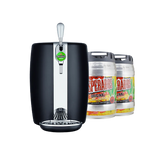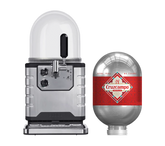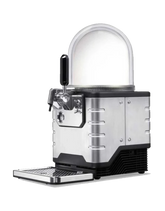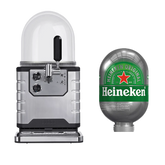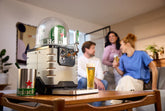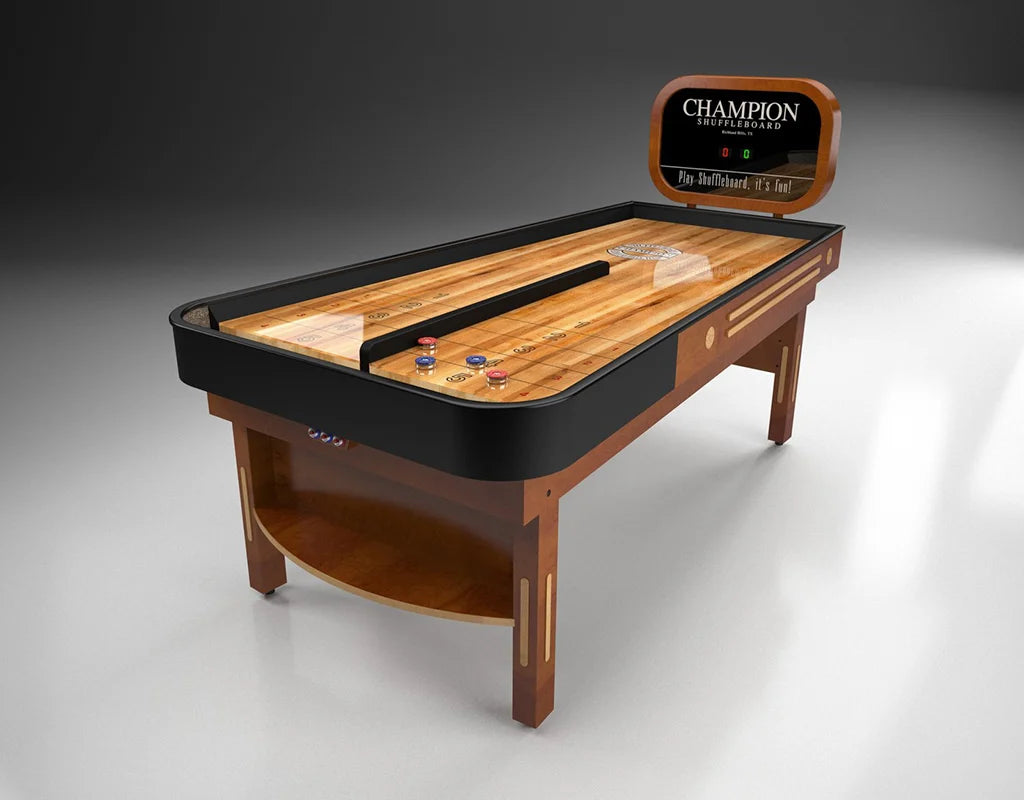The Ultimate Guide to Mastering Shuffleboard & Becoming a Pro!
Are you ready to take your shuffleboard game to the next level? Whether you’re a beginner looking to improve your skills or an experienced player aiming to become a pro for those game nights with your mates, this ultimate guide is your ticket to success.
From understanding the rules and techniques to honing your strategy and perfecting your shots, this Man Cave Geek guide has it all. We will explore the history and origins of shuffleboard, dive into the equipment you’ll need, and provide expert tips from seasoned players to help you improve your accuracy and consistency on the board.
Get ready to shuffle your way to success and become an unstoppable force on the shuffleboard court, so let’s dive in and master the art of shuffleboard together.
History and Origins of Shuffleboard
Shuffleboard has a rich history that dates back centuries. Its origins can be traced to 15th-century England, where it was originally played on the decks of ships. Sailors used to pass the time by sliding a coin across the deck, aiming to get it as close as possible to a designated target. This simple game eventually evolved into the shuffleboard we know today.
In the 20th century, shuffleboard gained popularity in the United States, especially in retirement communities and bars. It quickly became a beloved pastime for people of all ages, and its popularity has only continued to grow. Today, shuffleboard is played in homes, recreational centres, and even in professional tournaments around the world.
Equipment Needed for Shuffleboard
Before you can start playing shuffleboard, you’ll need to gather the necessary equipment for your games room. The most essential item is, of course, the shuffleboard table itself. These tables come in various sizes, ranging from 9 to 22 feet in length. The length you choose will depend on the available man cave and your level of skill and commitment to the game.
The playing surface of a shuffleboard table is typically made of a smooth, hard material, such as laminated wood or polymer. The table is divided into three sections: the playing surface, the gutters, and the scoring triangle. The playing surface is where the discs or pucks are slid, the gutters catch any stray shots, and the scoring triangle determines the points earned.
In addition to the table, you’ll also need shuffleboard pucks or discs. These are usually made of plastic or metal and come in different colours to differentiate between players. The pucks should be smooth and have a bit of weight to them for better control and accuracy. Lastly, you’ll need a scoreboard to keep track of the points and a shuffleboard wax or powder to create a smooth playing surface.
Basic Rules and Gameplay of Shuffleboard
Now that you have your shuffleboard table and equipment ready, let’s dive into the basic rules and gameplay. Shuffleboard is a game that is played between two players or two teams, with each side taking turns sliding their pucks down the table towards the scoring triangle. The objective is to get your pucks as close to the scoring triangle as possible and earn the highest points.
To determine who goes first, a coin toss or another fair method can be used. The player or team who starts will slide their puck from the end of the table, aiming to stop it within the scoring triangle. The opposing player or team will then take their turn, trying to knock their opponent’s puck out of the scoring triangle or position their own pucks in a more advantageous spot.
Points are awarded based on where the pucks come to rest. Pucks that are fully within the scoring triangle earn points, with the closest puck to the edge of the triangle scoring the highest. Any pucks that are touching the lines or outside of the triangle do not count. The player or team with the highest score at the end of the round wins the points for that round.
Techniques and Strategies for Improving Your Shuffleboard Skills
Becoming a pro shuffleboard player requires more than just luck. It involves honing your techniques and strategies to consistently make accurate shots and outmanoeuvre your opponents. Here are some key techniques and strategies that can help you improve your shuffleboard skills:
- Proper Stance and Grip: Start by adopting a stable and balanced stance with your feet shoulder-width apart. Hold the puck with a relaxed grip, using your thumb and fingers for control. Experiment with different grip styles to find what works best for you.
- Aim and Speed Control: Take your time to aim and visualise your shot before sliding the puck. Aim for the scoring triangle’s sweet spot or strategically position your pucks to block your opponent’s shots. Additionally, practice controlling the speed of your shots to ensure they end up where you want them.
- Bank Shots and Angles: Mastering bank shots and playing with angles can give you a significant advantage in shuffleboard. Learn how the pucks react when they hit the sides of the table and use this knowledge to your advantage. By bouncing your puck off the sides, you can redirect its path and position it more favourably.
- Reading the Board: Pay close attention to the condition of the playing surface and the wax or powder you’re using. Different surfaces and waxes can affect the speed and trajectory of your shots. Adapt your technique to the conditions and make adjustments as needed.
- Practice, Practice, Practice: As with any sport or game, practice is key to improving your shuffleboard skills. Set aside regular practice sessions to work on your technique, experiment with different shots, and develop your own playing style. The more you practice, the more comfortable and confident you will become on the shuffleboard table.
Common Mistakes to Avoid When Playing Shuffleboard
While mastering shuffleboard requires practice and skill development, it’s equally important to be aware of common mistakes that can hinder your progress. By avoiding these mistakes, you can elevate your gameplay and increase your chances of success. Here are some common mistakes to watch out for:
- Overthrowing or Underthrowing: One of the most common mistakes in shuffleboard is using too much or too little force when sliding the puck. Overthrowing can result in the puck sliding past the scoring triangle, while underthrowing can leave it short. Practice finding the right balance of force to achieve accurate shots.
- Poor Shot Selection: Choosing the wrong shot or failing to adapt to the game’s changing dynamics can cost you valuable points. Be mindful of the best shot to play in each situation and consider the different possibilities before making your move.
- Lack of Patience and Rushing: Shuffleboard requires a steady hand and a calm mind. Rushing your shots or becoming impatient can lead to poor decision-making and inaccurate slides. Take your time, assess the situation, and execute your shots with precision.
- Neglecting Strategy and Positioning: Shuffleboard is not just about sliding pucks; it’s also a game of strategy. Failing to think ahead and strategically position your pucks can give your opponent an advantage. Always consider how your shots will impact the overall game and plan accordingly.
- Ignoring Your Opponent’s Moves: Pay attention to your opponent’s shots and adjust your strategy accordingly. By carefully observing their moves, you can anticipate their next move, block their shots, or even use their pucks to your advantage.
Shuffleboard Variations and Alternative Games
While traditional shuffleboard is a classic game enjoyed by many, there are also variations and alternative games that can add excitement and variety to your shuffleboard experience. These variations often have different rules, scoring systems, or playing surfaces, providing a fresh twist to the game similar to bars like Electric Shuffle. Here are a few popular shuffleboard variations you can explore:
- Sjoelen: Originating from the Netherlands, Sjoelen is a tabletop shuffleboard game played with wooden pucks. The goal is to slide the pucks through a series of small arches at the opposite end of the table, aiming for maximum points.
- Crazy Eight: In this variation, players take turns sliding their pucks to get as close to the number 8 without touching it. The player with the closest puck scores points based on its position in relation to the number 8.
- Bumper Shuffleboard: Bumper shuffleboard adds an extra challenge by placing bumpers on the sides of the table. The bumpers can redirect pucks, making it more difficult to achieve accurate shots and strategic positioning.
- Horse Collar: Horse collar shuffleboard is played on a circular table with a peg in the centre. The goal is to slide the pucks as close to the peg as possible. Players can also knock their opponents’ pucks away to gain an advantage.
- Shuffleboard Bowling: This variation combines the rules of shuffleboard and bowling. Instead of aiming for the scoring triangle, players aim to knock down pins placed at the opposite end of the table. The player with the highest score wins.
Shuffleboard Etiquette and Sportsmanship
While shuffleboard is a competitive game, it’s important to maintain good sportsmanship and adhere to proper etiquette. Showing respect for your opponents and following these unwritten rules can enhance the overall experience for everyone involved. Here are some key etiquette guidelines to keep in mind:
- Wait Your Turn: Avoid distracting or interrupting your opponents when it’s their turn to play. Wait patiently and give them the space and time they need to make their shots.
- Avoid Excessive Celebrations: While celebrating a successful shot is natural, it’s important to be mindful of your opponents’ feelings. Excessive celebrations or taunting can create a hostile atmosphere and spoil the fun.
- Clean Up After Yourself: After each round or game, make sure to clear the playing area of any debris or discarded pucks. Leaving the playing surface clean and tidy shows respect for the game and the venue.
- Respect the Equipment: Treat the shuffleboard table, pucks, and other equipment with care and respect. Avoid slamming or throwing the pucks, and notify the venue staff if you notice any damage or irregularities.
- Congratulate and Learn from Your Opponents: Regardless of the outcome, always congratulate your opponents on their good shots and victories. Take the opportunity to learn from their skills and strategies, and use it to improve your own game.
Shuffleboard Tournaments and Competitive Play
If you’re ready to take your shuffleboard skills to the next level, participating in tournaments and competitive play can provide a thrilling and challenging experience. Tournaments often attract skilled players from around the world and offer opportunities to test your abilities against the best. Here are some key aspects to consider when entering shuffleboard tournaments:
- Research and Choose the Right Tournament: There are various shuffleboard tournaments held throughout the year, ranging from local events to international championships. Research different tournaments and select the ones that align with your skill level and goals.
- Practice and Prepare: Prior to the tournament, dedicate ample time to practice and refine your skills. Focus on the specific techniques and strategies you’ll need for tournament play, such as speed control, accuracy, and adapting to different playing conditions.
- Stay Calm and Focused: Tournaments can be intense and nerve-wracking, but it’s important to stay calm and focused during your matches. Trust in your abilities, stick to your game plan, and avoid getting overwhelmed by the pressure.
- Learn from the Experience: Win or lose, participating in tournaments is a valuable learning experience. Take the opportunity to observe and learn from other players, analyse your own performance, and identify areas for improvement.
- Enjoy the Journey: Tournaments offer a chance to meet fellow shuffleboard enthusiasts, share experiences, and create lasting memories. Embrace the camaraderie and enjoy the journey, regardless of the outcome.
Final Tips for Becoming a Pro Shuffleboard Player
Congratulations! You have now reached the end of our ultimate guide to mastering shuffleboard and becoming a pro player. By understanding the history, rules, techniques, and strategies, you have gained valuable insights into this beloved game. Remember, mastery takes time and practice, so be patient and persistent in your pursuit of shuffleboard excellence.
Here are some final tips to keep in mind as you continue your shuffleboard journey:
- Be Consistent: Consistency is key in shuffleboard. Practice regularly, maintain a steady and focused approach, and fine-tune your technique to achieve predictable and accurate shots.
- Study the Game: Continuously educate yourself about shuffleboard by watching professional matches, reading books, and following online resources. The more you understand the game, the better equipped you’ll be to adapt and excel.
- Join a Shuffleboard Community: Engage with other shuffleboard enthusiasts by joining local clubs or online communities. Sharing experiences, tips, and strategies with like-minded players can greatly enhance your learning and enjoyment of the game.
- Have Fun: Above all, shuffleboard is a game meant to be enjoyed. Embrace the challenge, have fun with your friends and opponents, and savour the moments of victory and improvement along the way.
Now it’s time to hit the shuffleboard table from the selection on Man Cave Geek, armed with the knowledge and skills you’ve acquired. Remember to practice, stay focused, and never stop striving for improvement. With dedication and passion, you can become a pro shuffleboard player and experience of mastering this timeless game
